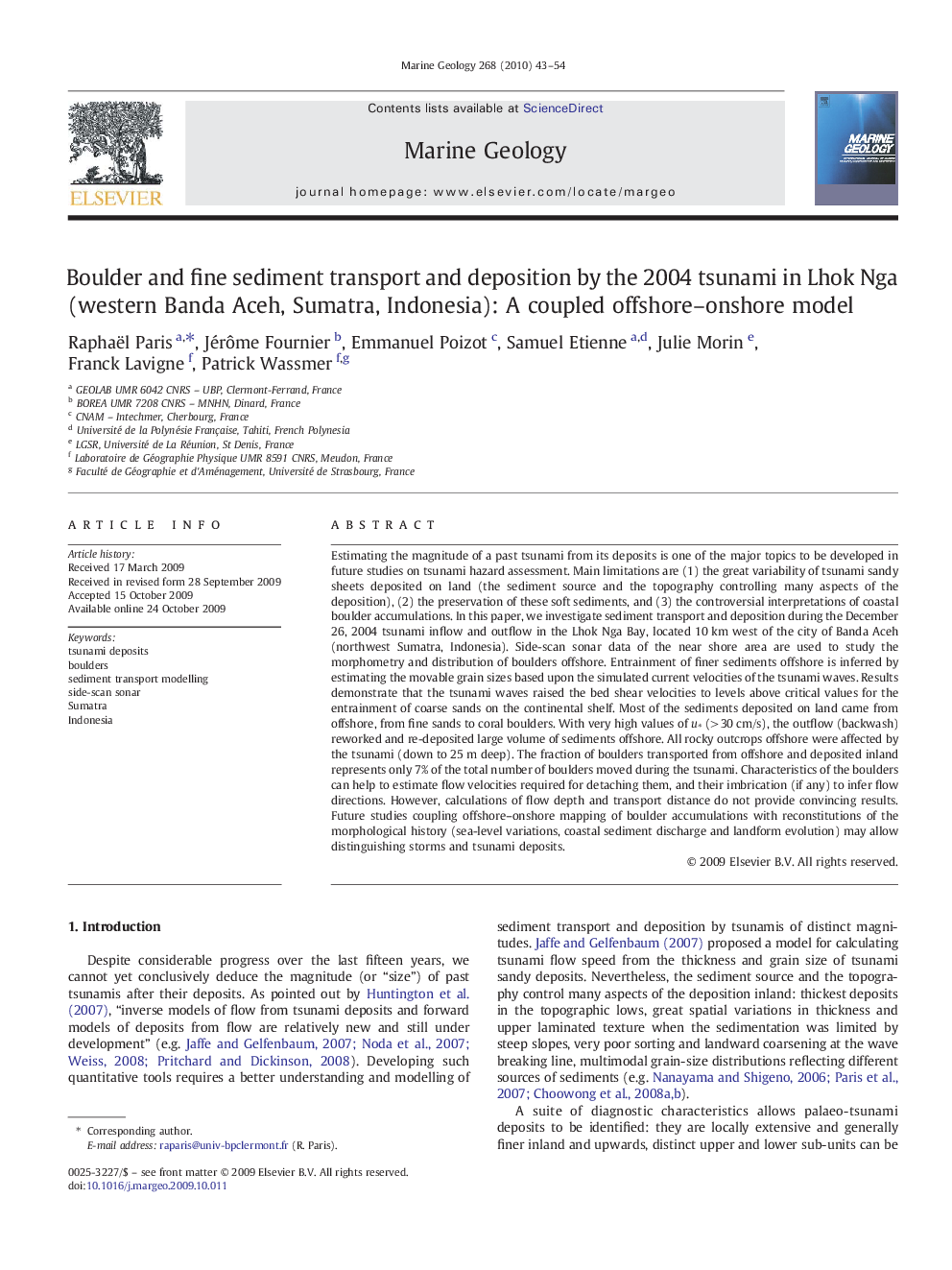| کد مقاله | کد نشریه | سال انتشار | مقاله انگلیسی | نسخه تمام متن |
|---|---|---|---|---|
| 4718986 | 1639155 | 2010 | 12 صفحه PDF | دانلود رایگان |

Estimating the magnitude of a past tsunami from its deposits is one of the major topics to be developed in future studies on tsunami hazard assessment. Main limitations are (1) the great variability of tsunami sandy sheets deposited on land (the sediment source and the topography controlling many aspects of the deposition), (2) the preservation of these soft sediments, and (3) the controversial interpretations of coastal boulder accumulations. In this paper, we investigate sediment transport and deposition during the December 26, 2004 tsunami inflow and outflow in the Lhok Nga Bay, located 10 km west of the city of Banda Aceh (northwest Sumatra, Indonesia). Side-scan sonar data of the near shore area are used to study the morphometry and distribution of boulders offshore. Entrainment of finer sediments offshore is inferred by estimating the movable grain sizes based upon the simulated current velocities of the tsunami waves. Results demonstrate that the tsunami waves raised the bed shear velocities to levels above critical values for the entrainment of coarse sands on the continental shelf. Most of the sediments deposited on land came from offshore, from fine sands to coral boulders. With very high values of u⁎ (> 30 cm/s), the outflow (backwash) reworked and re-deposited large volume of sediments offshore. All rocky outcrops offshore were affected by the tsunami (down to 25 m deep). The fraction of boulders transported from offshore and deposited inland represents only 7% of the total number of boulders moved during the tsunami. Characteristics of the boulders can help to estimate flow velocities required for detaching them, and their imbrication (if any) to infer flow directions. However, calculations of flow depth and transport distance do not provide convincing results. Future studies coupling offshore–onshore mapping of boulder accumulations with reconstitutions of the morphological history (sea-level variations, coastal sediment discharge and landform evolution) may allow distinguishing storms and tsunami deposits.
Journal: Marine Geology - Volume 268, Issues 1–4, 15 January 2010, Pages 43–54